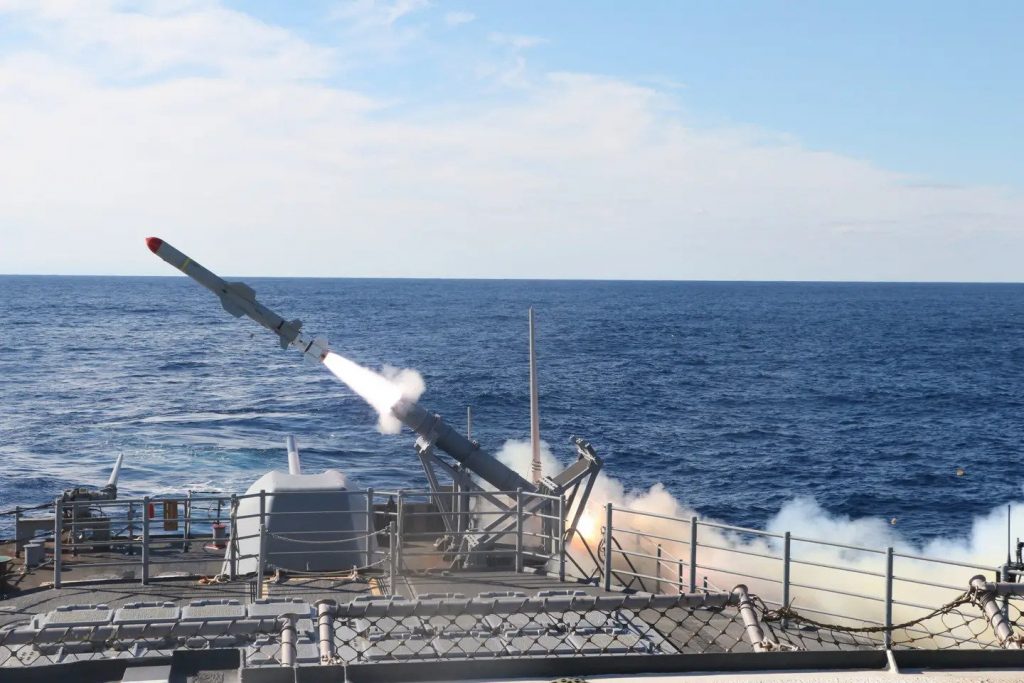During a Surface Warfare Advanced Tactical Training (SWATT) exercise in the Atlantic, the US Navy deployed an infrared camera to record the interception of a GQM-163 Coyote supersonic sea-skimming target by SM-2 surface-to-air missiles.
The exercise took place off NASA’s Wallops Flight Facility in Virginia on March 27 and was conducted by Carrier Strike Group Two, led by the USS Dwight D. Eisenhower aircraft carrier.
The GQM-163, which was launched off a stand, was used to simulate anti-ship cruise missiles and other missile-like threats. Within seconds of deployment, the target was engaged by at least two Raytheon SM-2 Standard interceptors fired from the USS Philippine Sea and USS Mason. Both missiles hit the target causing it to explode and fall into the water.
Supersonic sea-skimming anti-ship missiles like the GQM-163 are among the most challenging threats that Navy ships could face during a high-end attack. Such missiles fly at low-to-medium altitudes before dropping to heights barely above the ocean’s surface for their terminal attack run. This makes it difficult for ships’ defenses to detect and respond to the threat.
The SM-2 missiles were launched using the Aegis combat system backbone, which combines advanced software, computing elements, sensors, and weapons to detect, classify, track, and engage incoming threats.

Aegis is designed to form an integrated defense bubble that can connect multiple vessels, aircraft, sensors, and shooters to address large-scale attacks. The exercise was meant to simulate a sudden and imminent threat, highlighting the importance of speed in Aegis’ effectiveness.
In 2016, AEGIS successfully prevented a missile attack on the Mason, which was passing through the Bab el Mandeb strait, after detecting two cruise missiles fired from a Houthi-controlled area of Yemen. AEGIS launched its own missiles in response, and the adversary’s attack was unsuccessful. However, the anti-ship missile used by the Houthis was less advanced than the ones being developed today.
China, for example, is actively developing its own anti-ship missile arsenal, such as the YJ-18, which is integrated into the People’s Liberation Army Navy’s destroyers. This missile can cruise subsonically before reaching Mach 3 in its terminal phase, making it difficult to defend against without airborne sensors. China also has the YJ-12, an air-launched anti-ship missile capable of deployment from H-6K bombers.
Russia has been a pioneer in high-speed anti-ship missiles, with Soviet-era supersonic anti-ship missiles still in service and newer types being fielded or exported. The Zircon, a hypersonic anti-ship weapon capable of reaching speeds of Mach 9, has also been developed by Russia.
Just recently, Russia tested its P-270 Moskit medium-range supersonic cruise missile in the Sea of Japan, which reportedly made contact with a mock target.
Supersonic anti-ship missiles are proliferating among various allies and enemies, making it increasingly critical for close-in reaction training against real representations of these threats.


